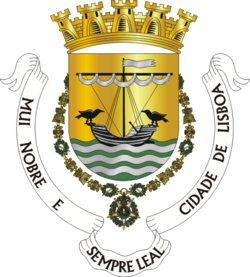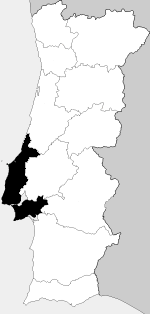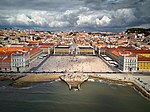Banco de Portugal
1846 establishments in PortugalBanks established in 1846Banks of PortugalCentral banksEconomy of Portugal ... and 1 more
European System of Central Banks
The Banco de Portugal (English: Bank of Portugal) is the central bank of the Portuguese Republic. The bank was founded by royal charter in 1846, during the reign of Queen Maria II of Portugal, by a merger of the Banco de Lisboa (Bank of Lisbon), the first bank founded in Portugal, and the Companhia Confiança Nacional (National Insurance Company), making it one of the oldest banks in continuous operation in the world. It is a full member of the Eurosystem and the European System of Central Banks.
Excerpt from the Wikipedia article Banco de Portugal (License: CC BY-SA 3.0, Authors).Banco de Portugal
Rua Áurea, Lisbon Baixa (Santa Maria Maior)
Geographical coordinates (GPS) Address External links Nearby Places Show on map
Geographical coordinates (GPS)
| Latitude | Longitude |
|---|---|
| N 38.708729 ° | E -9.138148 ° |
Address
Banco de Portugal
Rua Áurea
1100-063 Lisbon, Baixa (Santa Maria Maior)
Portugal
Open on Google Maps









